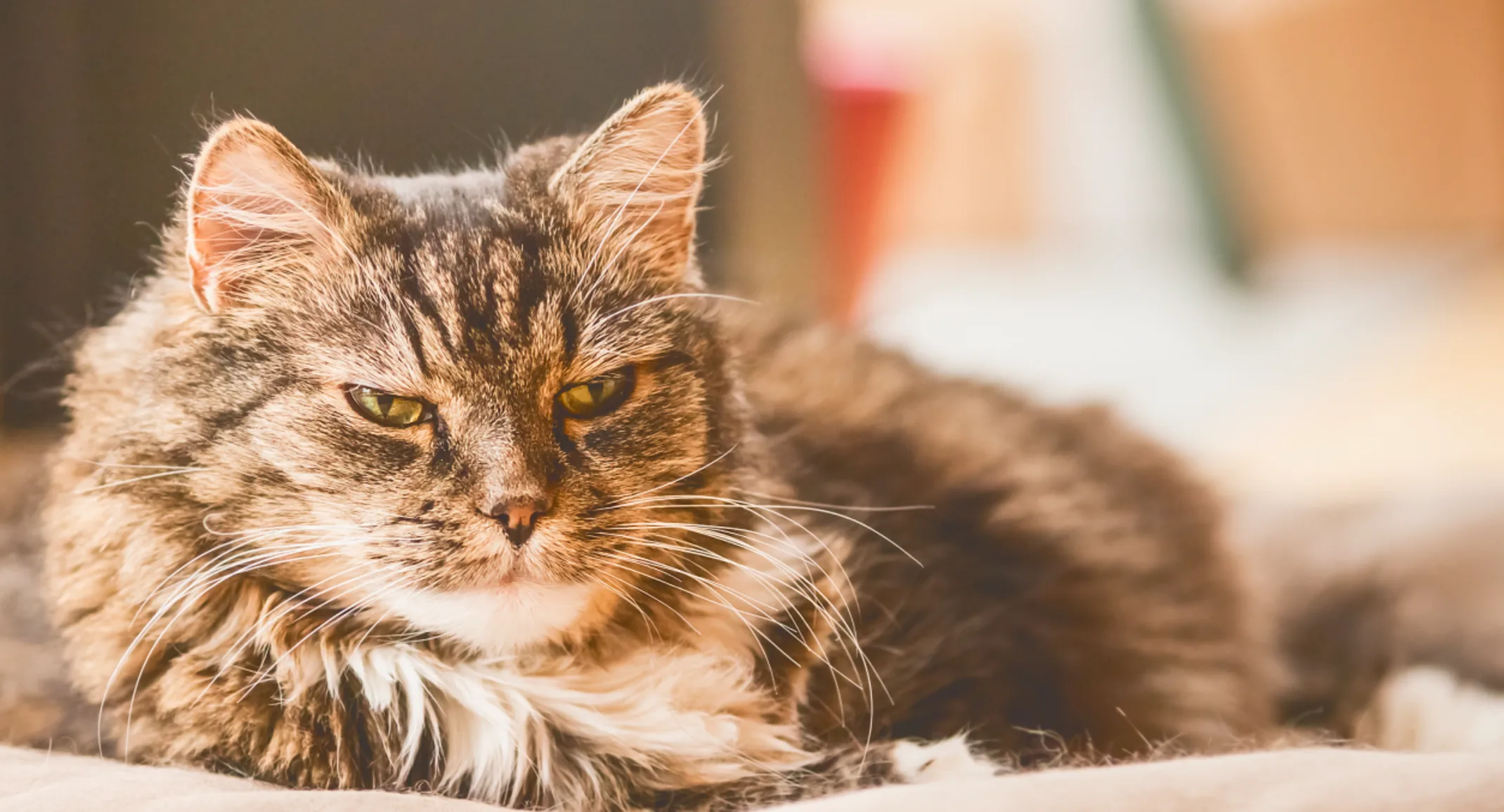Common Health Problems in Senior Cats: Part 2
Cats

Cats: Masters of Disguise
As we discussed last week in Part 1 of this series, cats are masters of disguising their pain. That makes it difficult for even attentive cat owners to pick up on subtle signs of illness, particularly if those illnesses take a while to develop. Luckily, there are some signs we can watch for that help us know when to get Fluffy to the vet.
Today we're going to talk about two more health problems that are common in senior cats: hyperthyroidism and high blood pressure.
Hyperthyroidism
The thyroid is a small gland in the back of the throat that controls metabolic functions and affects your cat's energy level. When it overproduces thyroid hormones, it can wreak havoc with your pet’s health, causing secondary heart disease and hypertension (among other things). While it used to be rare, over the last few decades, this condition has become fairly common in middle-aged and older cats.
This hormone imbalance often causes cats to lose weight, have increased thirst, appetite, and urination, and become hyperactive. Your cat's coat may also appear matted or greasy. Like other chronic conditions associated with older cats, this disease starts slowly, becoming more severe over time. The symptoms of hyperthyroidism are similar to many other age-related diseases, and your veterinarian will run a series of tests to see if your cat has this hormone imbalance. Treatment most commonly includes regular medication to keep the hormones in balance and to minimize damage to other systems.
High Blood Pressure
Also known as hypertension, high blood pressure can affect your cat’s heart, kidneys, eyes, and nervous system, causing seizures, blindness, kidney failure, and much more. Just like in humans, once symptoms start to appear, the blood pressure has been high for some time - so getting it checked at regular vet visits is important!
Blood pressure in cats is measured much like in humans. An inflatable cuff is put around the tail or a leg, and a series of measurements are taken. Usually, the first measurement is thrown out (to control for nervousness, etc.), and the other measurements are averaged. Additionally, your veterinarian will need to do lab tests to see if there are other disease processes (either primary or secondary) occurring that need to be addressed.
Feline hypertension can be a secondary condition - that is, caused by another disease process - or it can be a primary condition (the root disease process). Diagnosing the condition correctly, that is, primary vs. secondary, is the key to proper treatment. If the high blood pressure is secondary to another disease process, the primary condition must be treated. This treatment may cause the high blood pressure to resolve, but if it doesn't, medication may be required. If high blood pressure is the primary disease, your cat will most likely need medication (indefinitely) and, possibly, new lower-sodium food.
As discussed last time (in part 1), it's important for you to pay close attention to your cat's behavior and note any changes, no matter how slight they may seem. Since Fluffy can't talk, it's up to us to interpret their behavior and ensure they get the medical care they need! If you're concerned about your cat, give us a call or request an appointment using our online form!
Stay tuned for part 3 in our series on senior cats where we discuss cancer and dental disease!
